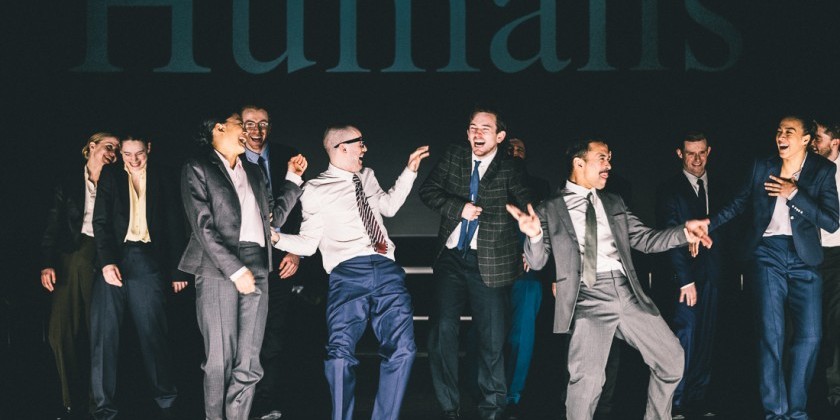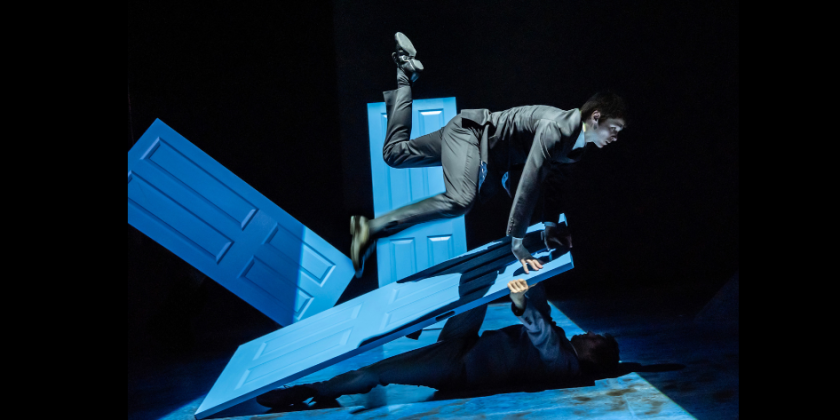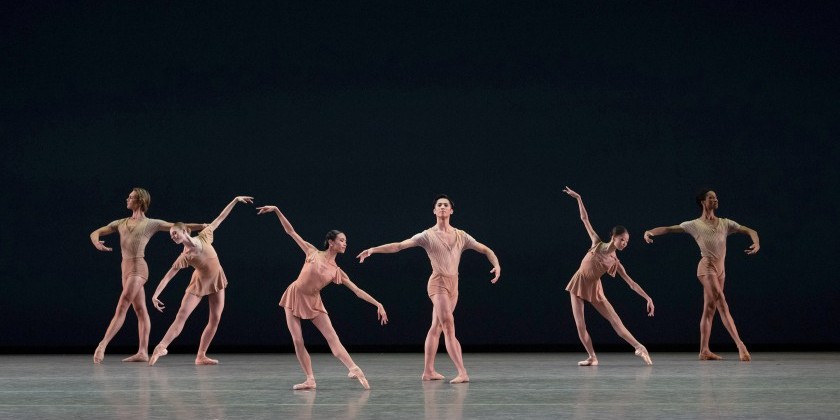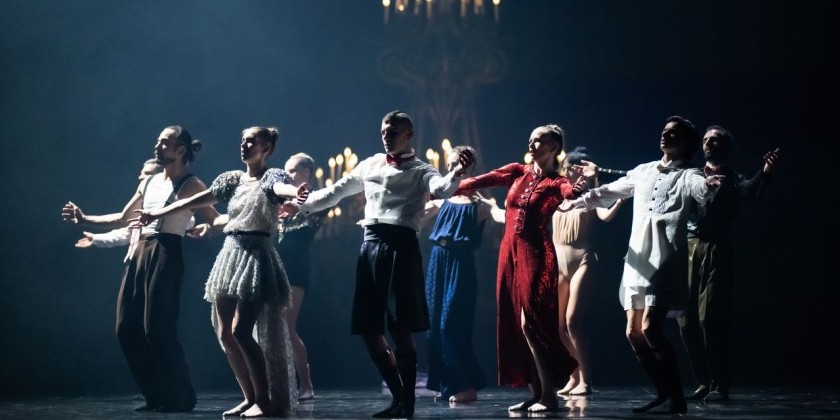IMPRESSIONS: New York Theatre Company’s Dance-Enhanced "Machinal" at New York City Center Stage II

New York Theatre Company’s Machinal
Playwright: Sophie Treadwell
Director: Amy Marie Seidel
Choreographer: Madison Hilligoss
Scenic Designer: Rochele Mac
Lighting Designer: Colleen Doherty
Costume Designer: Hahnji Jang
Sound Designer: Brittany Harris
Performers: Katherine Winter (Young Woman), Temidayo Amay (Doctor), Sam Im (Husband), Kimberly Immanuel (Telephone Girl), Soph Metcalf (Lover), Shelley Mitchell (Mother), Alice Reys (Defense Lawyer), Veronica Simpson (The Machine/Tap Improvisations), Hannah Snow (Nurse), Michael Verre (The Machine/Tap Improvisations), Alex Lauren, Annaliese Wilbur
Venue: New York City Center Stage II
Dates: June 10 – 13, 2025
The inaugural presentation of the newly-formed New York Theatre Company (led by Chilina Kennedy, Katherine Winter, and Michael Scott), Machinal is a tap dance and rhythmic movement-enhanced, sound-driven reimagining of the 1928 Expressionist drama by American playwright Sophie Treadwell. Playing Off-Broadway at New York City Center Stage II through July 13, the production is compellingly staged by director Amy Marie Seidel and choreographer Madison Hilligoss.
.jpg)
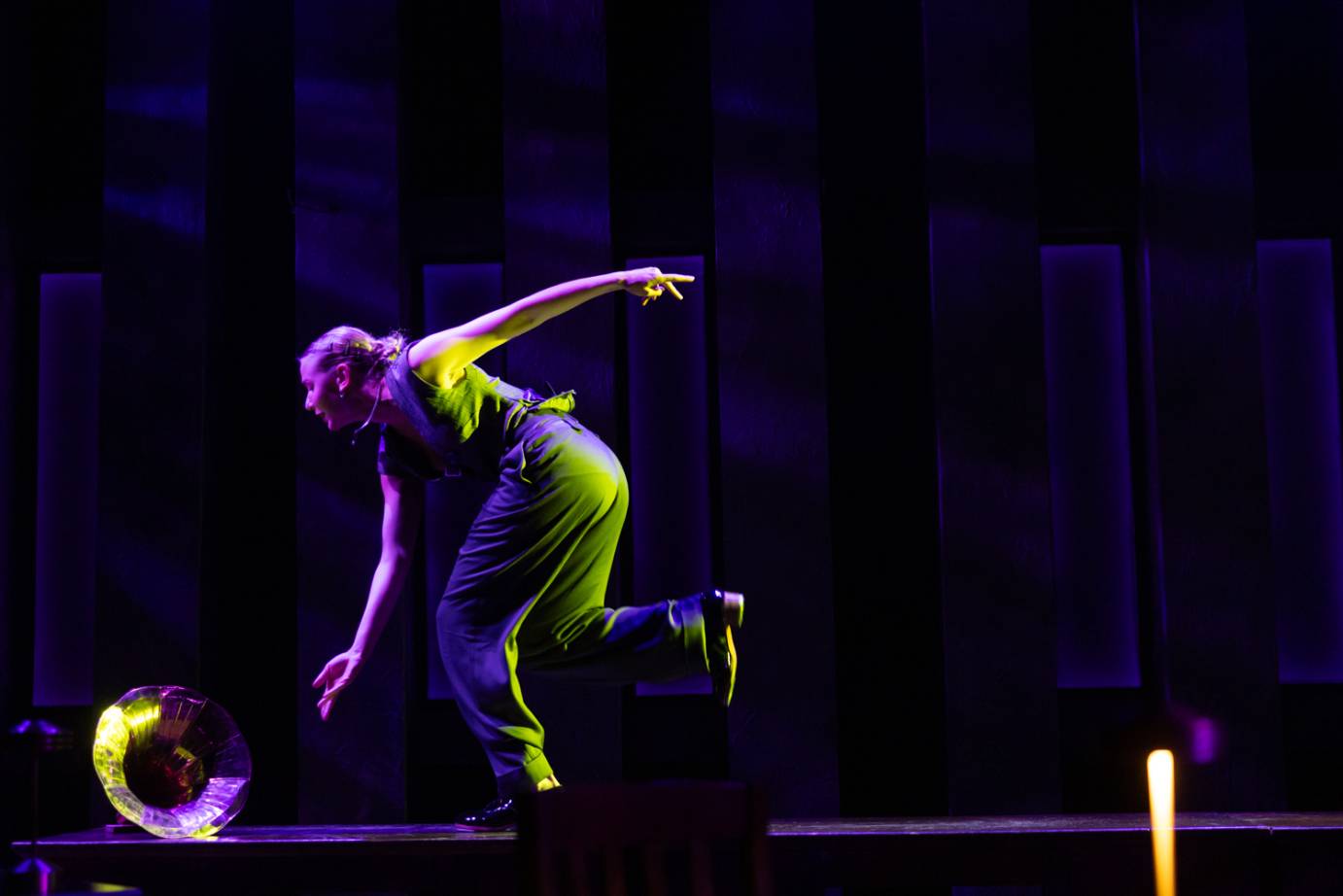
In the show’s exciting opening moments, we are introduced to both the what and the how of the drama: we grasp the play’s overarching theme — the destruction of the individual human spirit by a subordinating mechanization of society — and witness how those ideas will be theatrically conveyed — via the aesthetics of rhythmic sound. At the outset, a cellist sits onstage playing slow, tranquil music, while others race about pushing heavy wooden desks and rolling chairs into linear configurations. We are immediately struck by the contrast between the musical tones and the grating sounds of the moving office furniture. A figure in tap shoes (Veronica Simpson, as The Machine) marches menacingly in right-angled pathways toward the cellist whose musical phrases disintegrate. They are replaced by a strong, steady beat, an inescapable stream of metallic sounds generated by Simpson’s weighty heel drops.
.jpg)
To that relentless pulse are added the noises of an adding machine, rubber-stamp, telephone, typewriter, and flipping file folders — made by the robotic, rhythmically precise movements of an ensemble of office workers now positioned behind their desks. The workers soon begin to converse in an unnatural form of fast, staccato, jarringly accented dialogue. (It seems this kind of detached delivery was prescribed by Treadwell in notes on her text.) We are riveted by the complex choreography and interwoven rhythms created by the performers’ voices, props, and gestures, as they stand, twist, wheel about on their chairs, reach across their desks, and turn, kick, or lie backwards upon them — all whilst continuing to type, stamp, file, calculate, or answer the phone. And all under the command of the ongoing beat of Simpson’s pounding tap shoes.
.jpg)
Suddenly, Helen arrives. She’s late, and as everyone crowds in on her, demanding to know why, we start to feel her mounting anxiety, her claustrophobia, her need to break free from pressures to make money, from the taunts of prying, judgmental co-workers, and her disgust for the harassing boss she feels forced to marry. As the play progresses, its thematic content grows “genderized” as it becomes clear that the dehumanizing “machine” that’s trapping Helen is fueled by strict rules governing male and female behaviors.
Throughout the production, in impressively orchestrated passages tightly integrating text, rhythmical movement, and symbolic sounds, the show’s cast of multi-skilled performers reveal Helen’s tormented inner landscape. As she prepares for her nuptials, they surround her, jabbing their body parts, rapid-fire, in all directions, and inserting themselves into her personal space with a suffocating intensity that amplifies her fear of marrying. More often, the emotion-heightening performers lurk around the edges and corners of the stage, or in the aisles, and produce strategically timed sounds with their bodies, assisted by noisy mechanical devices or microphones. When Helen is alone with her Husband, each time he touches her we hear ugly buzzer noises or agitated tap-dance statements (dexterously delivered by Michael Verre) that illuminate Helen’s unstated repulsion. At the doctor’s office, a pregnant Helen gives no verbal response to a nurse’s questions; in place of Helen’s voice, Verre slams a hammer on a desk or makes rolling rhythms with his taps, and we feel the tension brewing inside of her. When the domineering Doctor arrives, anguished figures emerge from under Helen’s bed and perform animalistic moves and body percussion to the beat of an unseen drummer and the rhythms of Helen’s, finally spewing-out, words of rage.
.jpg)
Sometimes, the dancing bodies take center-stage and the expressivity of their rhythmic movements deepens. In nightclub scenes, the cold “office” sounds of Simpson’s metal-tap shoes are replaced by the warmer footfalls of patrons performing 1920s period social dancing in soft-soled shoes on a wooden floor. It’s not only the choreography’s more relaxed timings and body movements, but also the different “temperature” of the rhythmic sounds that underlines Helen’s shift from machine-impelled to more human-centered environments.
Briskly helmed by Seidel, the show is thrillingly paced throughout its entire first act. Yet at the start of the second half, now that Helen has had a sexual awakening and we realize how she plans to kill her husband, the production temporarily loses steam. It doesn’t pick up until its climactic trial scene. But the pay-off is well worth the wait. With two court stenographers typing furiously away in the front corners of the stage — “interpreting” the legal goings-on from startlingly opposite viewpoints – the trial plays out at supersonic speed as Helen is questioned by two crafty lawyers punctuating their dialogue with highly expressive choreography built of literal gestures, exaggerated postures, and lots of darting maneuvers, quick level changes, spins, and unpredictable changes of direction. Their argumentative actions evolve into a heart-pounding chase, out of which bursts Helen’s confession — she killed him so she could be free!

With the exception of Winter, who gives a formidable performance as Helen, all the cast members play multiple roles, often of varying genders, and always to indicative dramatic effect. In Sam Im’s likable portrayal of the Husband, we see that, even though he’s the antagonist, the character’s really not a bad guy — he’s just conceited, shallow, dismissive, unimaginative, and obsessed with making money. It’s not him, but rather what he represents that we detest. The play’s supporting characters are all drawn in this manner, as types, not nuanced personalities.
Actor Shelley Mitchell, tellingly perhaps, does double duty proffering appropriately “deaf” depictions of Helen’s Mother and the judge at her trial. Effusive Kimberly Immanuel ignites the proceedings, first as a bimbo Telephone Girl, then later with impressively speedy tap dancing. And while Temídayo Amay, insufferably pompous as Helen’s know-it-all Doctor, at other times contributes warm scatting to the production’s variegated soundtrack, one grows tired trying to count the wide-ranging contributions of Soph Metcalf — they embody an aggressively impatient office worker, later sing beautifully a cappella (in French, I think), play a bit on the guitar, co-pilot the thrilling trial scene as a fast-talking prosecutor amusingly pulling evidence out of desk drawers, and sensitively portray the role of Helen’s Lover.

Though fleet-footed Alice Reys gives the show’s most entertaining acting performance with her dynamic portrayal of Helen’s Defense Lawyer — and also does some snazzy Lindy Hopping in the first act — it’s Simpson who emerges as the show’s “MVP.” She really is the “machine” that keeps it all running, from the way she holds the entire first scene together with the unerringly steady beat of her taps, to her sparkling table-top tap solos that continually power the show’s stunning rhythmic eloquence.









